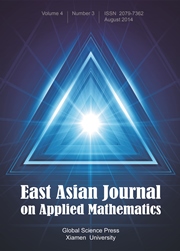No CrossRef data available.
Article contents
Parallel Solution of Linear Systems
Published online by Cambridge University Press: 20 July 2016
Abstract
Computational scientists generally seek more accurate results in shorter times, and to achieve this a knowledge of evolving programming paradigms and hardware is important. In particular, optimising solvers for linear systems is a major challenge in scientific computation, and numerical algorithms must be modified or new ones created to fully use the parallel architecture of new computers. Parallel space discretisation solvers for Partial Differential Equations (PDE) such as Domain Decomposition Methods (DDM) are efficient and well documented. At first glance, parallelisation seems to be inconsistent with inherently sequential time evolution, but parallelisation is not limited to space directions. In this article, we present a new and simple method for time parallelisation, based on partial fraction decomposition of the inverse of some special matrices. We discuss its application to the heat equation and some limitations, in associated numerical experiments.
- Type
- Research Article
- Information
- Copyright
- Copyright © Global-Science Press 2016


